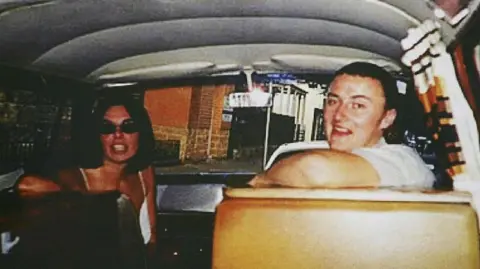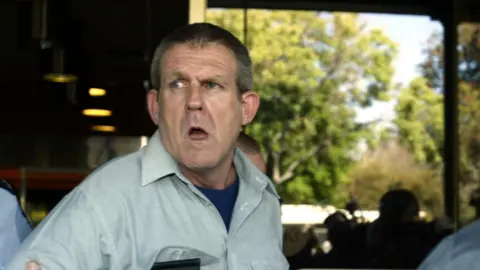Man who murdered British backpacker Peter Falconio dies
 Getty Images
Getty ImagesBradley Murdoch, the Australian man who murdered British backpacker Peter Falconio in 2001, has died from throat cancer.
Murdoch, 67, was serving a life sentence at a prison in Alice Springs, in Australia's Northern Territory.
He died in the local hospital's palliative care unit, on 15 July, a day after the 24th anniversary of the killing, the Department of Corrections told the BBC.
In a statement, the Northern Territory Police Force said: "It is deeply regrettable that Murdoch has died without, as far as we are aware, ever disclosing the location of Peter Falconio's remains."
Murdoch's death will be subject to investigation by the territory's coroner, officials added.
In 2005, Murdoch was convicted of murdering Mr Falconio but had never revealed the location of his body.
Peter Falconio was shot dead on a remote stretch of highway near the Northern Territory town of Barrow Creek, about 300km (186 miles) north of Alice Springs in July 2001.
The 28-year-old and his girlfriend, Joanne Lees, who were both from Yorkshire, were travelling around Australia at the time of his murder.
Murdoch pulled up beside Mr Falconio's vehicle, claiming to have seen sparks coming from the camper van he was driving.
He shot Mr Falconio in the head as he inspected the vehicle, before taking 28-year-old Ms Lees, into his car and binding her wrists with cable ties.
Murdoch was also convicted of the attempted kidnap and assault of Ms Lees, who managed to escape by hiding in outback scrub for several hours before she was able to signal for help.
"[Murdoch's] silence has denied the Falconio family the closure they have so long deserved. Our thoughts are with the Falconio family in the United Kingdom, whose grief continues," the police statement said.
The ordeal partly inspired the 2005 horror film Wolf Creek.
Murdoch was 43 when he committed the crimes.
During the trial, prosecutors said that it was likely he had disposed of Mr Falconio's body somewhere in the vast expanse of wilderness between Alice Springs and Broome, a distance of nearly 1,600km (1,000 miles).
In 2016, the Northern Territory introduced "no body, no parole" legislation, meaning Murdoch would not have been eligible for parole in 2032 if he did not reveal the location of Mr Falconio's body.
Murdoch had always maintained his innocence, and unsuccessfully appealed to overturn his convictions twice.
Lead investigator Colleen Gwynne told the ABC that it was a "sad day" for Mr Falconio's family, and that "an enormous opportunity" to find his remains had been lost.
 Getty Images
Getty ImagesIn an interview with local newspaper NT News published this week, Mr Falconio's father Luciano said: "I wish I could find him and make an end to it, bury him."
"I know what happened but I don't know where he is," Luciano added.
The police said in the statement that they remain "committed to resolving this final piece of the investigation", and reiterated that a reward of up to A$500,000 (£240,000) is available for information leading to the discovery of the remains of the murdered British backpacker.
Acting Commander Mark Grieve told a press conference in late June that police had "made numerous approaches" to Murdoch, but that "unfortunately... on all occasions he has chosen not to engage with police".
A statement released by Murdoch's family after his death said that he had always denied responsibility for the crimes "from his arrest until his death", and added that "he was much more than the headlines".

Get our flagship newsletter with all the headlines you need to start the day. Sign up here.
